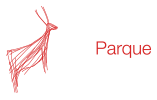
- This event has passed.
I National Meeting of Prehistoric Art

It has been since 35,000 years ago, already in the Upper Paleolithic, that humans already anatomically similar to us, but still hunter-gatherers, began to produce most of the rock images that came to us. These correspond roughly to the representation of large animals, a type of art that will last until the end of the Upper Paleolithic, some 11,800 years ago, located mostly inside caves and shelters or on movable supports in stone, bone or animal antler, largely due to the likely erosion of depictions engraved or painted on the open-air. However, there are important exceptions in the open-air, namely in the Tagus, Guadiana and Douro basins, being the concentration of sites in the Côa Valley the most astonishing manifestation of such sites. From this period we also know in Portugal some examples, both in the north and in the south, namely in the Escoural cave.
After the end of the Upper Paleolithic and until the end of the Bronze Age in Portugal, c. from 800 BC, when the earliest written accounts of the Iberian Peninsula date, humans continue to produce images, very different from previous ones, with the repertoire dominated by abstract themes and highly stylized representations of animals, and more especially of humans. Also of this period of the first producing communities, the country has excellent examples distributed throughout the national territory. These include megalithic art, present in menhirs and inside dolmens, shelters painted with schematic art, large concentrations of schematic art engraved at the bottom of the great river valleys or on the tops of plateaus and hills, menhir statues and engraved stelae or the idols carved in stone, bone or ivory from the Iberian Neolithic and Chalcolithic.
Despite the quantity and diversity of this heritage, and despite the fact that some of the sites or objects mentioned are prepared for public enjoyment, the truth is that, except for the art of the Côa Valley, the public is not aware of the importance and sometimes even of the existence of this important heritage. At a time when the tourism sector is becoming increasingly important and diversification of supply is crucial, cultural tourism is of enormous importance, capable of influencing the economic and social dynamics of regions. It is therefore important to raise awareness and create an audience for this heritage.
The First National Meeting of Prehistoric Art, which will take place at the Côa Museum on October 9th – marking the first European Rock Art Day – comes at a time when a wide range of entities with responsibility for heritage management and archaeological research, have already started the process of constitution of the National Network of Prehistoric Art, intending to be another actor in this aim of educating for the knowledge and enjoyment of cultural contents.
In this first edition, we intend to make known some of the most emblematic sites of Portuguese Prehistoric Art, thus reinforcing the efforts of institutional approaches that have been already initiated.

